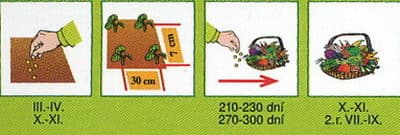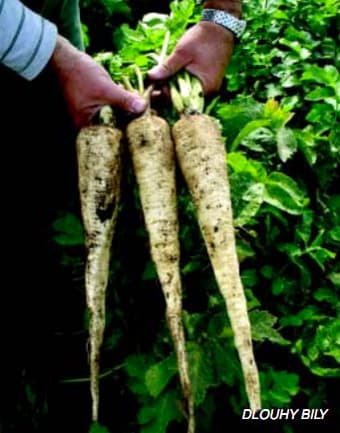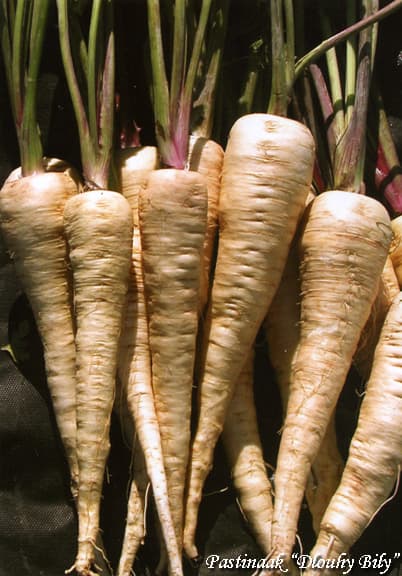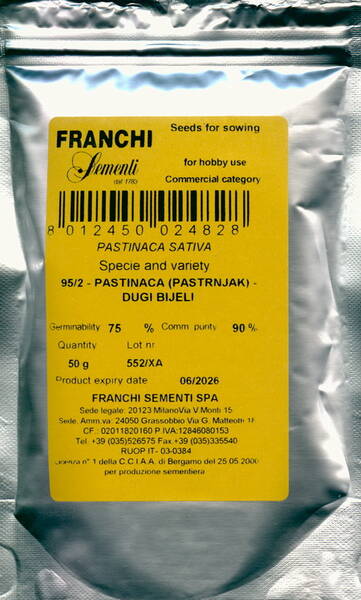High yielding parsnip with a long root and high level of resistance to diseases.
The plant has vigorous growth. Its white root is conical, 25-30 cm long, sharply pointed.
The variety is excellent for direct consumption as well as for processing, especially drying. Very good storability.
Growing period about 200 days from sowing (in Central Europe conditions).
1 gramm = 150-200 seeds.

Please note that…
· It has a taste reminiscent of carrots and parsley, inferior in spice to parsley.
Leaves are rough, so only good for flavoring soups and hot dishes
· The root is used in dried and fresh form as a seasoning for soups, borscht, fish dishes, pickled cucumbers, marinades.
Parsnip is well preserved until spring, easily tolerates slight frosts. It can overwinter in the ground under cover, and in early spring it can be used as needed.

The most valuable dietary product.
Cold-resistant, moisture- and photophilous, frost-resistant. Grows well in humus-rich, neutral soils.
Sow in early spring in well-lit areas. Seeding rate 0.4-0.5 g/m2. Embedding depth 1.5-2 cm. Row spacing 20-30 cm.
Seeds germinate in 3-4 weeks. Seedlings are thinned out, leaving 10-15 cm between plants.
Parsnip grows especially slowly for the first 2 months, therefore it requires careful care: loosening, weeding, watering is not frequent, but plentiful (10 liters of water per 1 m2).
On hot days, parsnip leaves release burning essential oils that can cause skin burns, so it is best to take care of the crops early in the morning or late in the evening.
Root crops are harvested late in the fall, but before the onset of frost. Stored in sand at high humidity and low temperature.

Eng.: Parsnip. Bot. syn.: Pastinaca fleischmannii Hladnik.
Did you know that... the head and side roots of root crops are cut off, slightly cleaned, cutting out the damaged parts of the root crop.
Boil for 2 minutes in boiling water, and then roast in the oven along with the meat.
Root vegetables can be cut into strips or rings and fried in oil, or dipped in dough and then fried.
You can also mash boiled carrot parsnips with butter and nutmeg.
* When processing the parsnip root, it should not be allowed to oxidize, therefore it is cleaned and cut only with a stainless steel knife.
The peeled root, if not used immediately, is placed in water acidified with lemon juice or citric acid.
* Parsnip is used in the same dishes and in the same way as parsley and celery - mostly fresh (mainly root).
It doesn't dry well.
Its aroma is weaker, more delicate and more neutral than that of parsley and celery.















